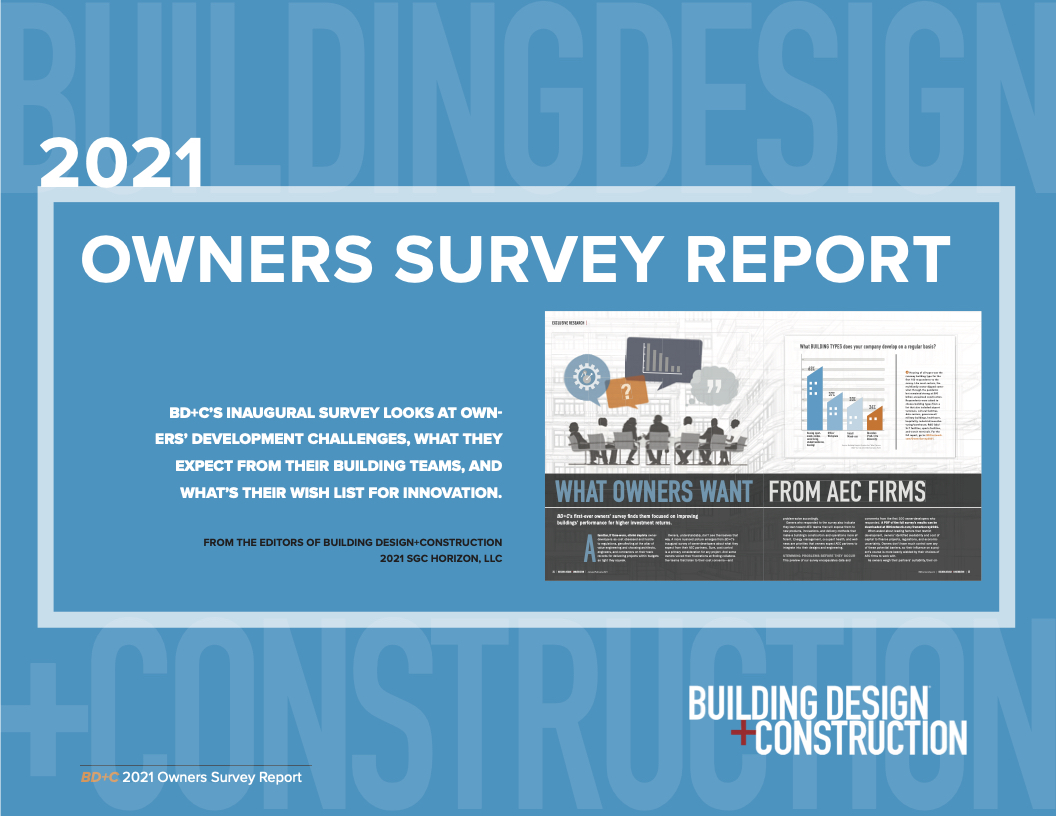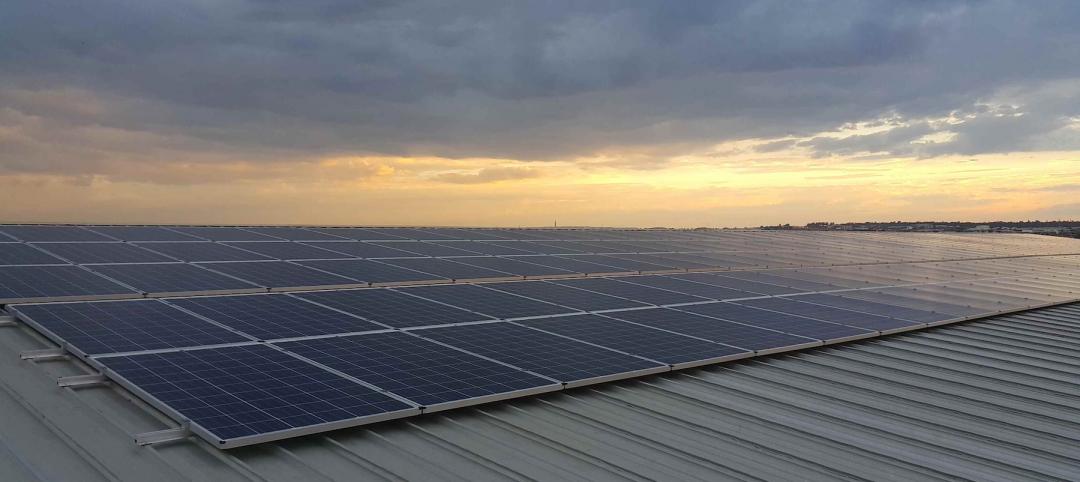Cost isn’t the only thing on building owners’ minds these days, but it certainly informs their choices of AEC partners, projects, and products. This is one of the many takeaways from BD+C’s inaugural Owners Survey Report, which collected input from 156 building owners and developers throughout December 2020 and January 2021 on a variety of topics: their top development challenges, what they look for in AEC firm partners, and their most promising innovations.
The survey findings point to a growing demand for collaboration and partnership during these chaotic times—and mounting frustration over a lack of focus and discipline among their AEC firm partners around project costs.
“Architects and designers need to work within a budget,” said Michael Vachio, LEED AP, Vice President of Development and Construction for JL Capital in Hawaii. “The value engineering phase of a project is becoming longer and larger.”
Time and again, in their comments, owners asserted that AEC firms don’t listen to their concerns, especially—but not exclusively—about taming a project’s cost. Owners also claimed they want closer collaboration with their teams, subs, and suppliers, some to the point of encouraging integrated project delivery methods that ultimately speed the construction process.
At the very least, AEC firms might reconsider how they pitch projects, with an eye toward appreciating the owner’s perspective.
AEC firms also need to overcome some owners’ lingering skepticism about investing in strategies that are environmentally responsible but whose implementation costs “impact the rents tenants are willing to pay and [what] financial institutions are willing to lend in some markets,” said Cassie Paben, Director of Business Development for Tetrad Property Group.
Click To Download BD+C's 2021 Owners Survey Report
This exclusive BD+C survey of 156 building owners and developers explores the changing and most-pressing needs of this highly influential group. From project financing to client service to design, construction, and operations, this research breaks down emerging trends, innovations, and the biggest wants and needs among owners/developers. The survey covers:
• What owners/developers look for in an AEC firm
• Biggest development challenges
• Top health/wellness/environmental strategies on projects
• Single-biggest innovation implemented on projects
• Response to the COVID-19 pandemic.
Download the 16-page PDF report with the complete findings from BD+C's 2021 Owners Survey. Thanks!
That being said, AEC firms should also test those waters to see if owners are prepared to enter into contractual commitments necessary for establishing accountable and financial collaboration on both sides.
Owner–AEC relations that work usually boil down to trust. Our survey reveals that, perhaps more than ever, owners are turning to their AEC partners to help their companies and projects take advantage of the
latest products and best practices in such areas as technology, building systems, energy efficiency, and sustainability.
Our survey’s respondents sounded eager to try out new ideas that deliver predictable ROIs. But as one owner conceded, the industry is moving faster than any one company can keep up with. AEC firms only increase their value when they provide practical solutions for projects that factor in an owner’s budgetary, marketing, and operational parameters, as well as end-user and occupant comfort.
Download the Owners Survey Report at: BDCnetwork.com/OwnerSurvey2021.
Related Stories
Sports and Recreational Facilities | Apr 25, 2022
Iowa's Field of Dreams to get boutique hotel, new baseball fields
A decade ago, Go the Distance Baseball formed to preserve the Iowa farm site where the 1989 movie Field of Dreams was filmed.
Building Team | Apr 22, 2022
EarthCam Adds Senior Leadership Roles to Facilitate Rapid Growth
EarthCam today announced several new leadership positions as it scales up to accommodate increasing demand for its webcam technology and services.
Architects | Apr 22, 2022
Top 10 green building projects for 2022
The American Institute of Architects' Committee on the Environment (COTE) has announced its COTE Top Ten Awards for significant achievements in advancing climate action.
Mixed-Use | Apr 22, 2022
San Francisco replaces a waterfront parking lot with a new neighborhood
A parking lot on San Francisco’s waterfront is transforming into Mission Rock—a new neighborhood featuring rental units, offices, parks, open spaces, retail, and parking.
Legislation | Apr 21, 2022
NIMBYism in the Sunbelt stymies new apartment development
Population growth in Sunbelt metro areas is driving demand for new apartment development, but resistance is growing against these projects.
Building Team | Apr 20, 2022
White House works with state, local governments to bolster building performance standards
The former head of the U.S. Green Building Council says the Biden Administration’s formation of the National Building Performance Standards Coalition is a “tremendous” step in the right direction to raise building performance standards in the U.S.
Market Data | Apr 20, 2022
Pace of demand for design services rapidly accelerates
Demand for design services in March expanded sharply from February according to a new report today from The American Institute of Architects (AIA).
Multifamily Housing | Apr 20, 2022
A Frankfurt tower gives residents greenery-framed views
In Frankfurt, Germany, the 27-floor EDEN tower boasts an exterior “living wall system”: 186,000 plants that cover about 20 percent of the building’s facade.
Healthcare Facilities | Apr 19, 2022
6 trends to watch in healthcare design
As the healthcare landscape continues to evolve, IMEG’s healthcare leaders from across the country are seeing several emerging trends that are poised to have wide-ranging impacts on facility design and construction. Following are six of the trends and strategies they expect to become more commonplace in 2022 and the years to come.
Energy-Efficient Design | Apr 19, 2022
A prefab second skin can make old apartments net zero
A German startup is offering a new way for old buildings to potentially reach net-zero status: adding a prefabricated second skin.


















